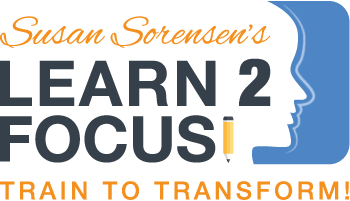What’s the connection between body movements and neurological development? When do babies start learning how to move and mature? What might cause certain basic movement patterns to be skipped?
Learn what Canelle Demange has to say in part two of my exclusive Q&A interview! She is a neurodevelopmental movement expert with her own practice here in Honolulu. She works with kids and adults who may have autism, ADHD or other developmental disorders. Her primary focus is using body movements to improve and develop healthy neurodevelopment.
How does neurodevelopment work in babies?
Think of the brain as a house you are building. You want to start with a strong foundation and that is what babies do when they are on the floor: belly crawling, creeping on hands and knees, and exploring the world.
When they have spent enough time integrating those reflexes – some of which were already developed in the uterus – the lower parts of the brain then mature.
Reflexes are like the letters of the alphabet. With practice you learn to combine them together and be able to execute more complex forms of movement. Reflexes organize movement and movement develops the brain.
But there are many things that can interrupt the maturation process of the nervous system. When we skip some patterns, we develop compensatory patterns which can be more stressful and less efficient as we perform a task.
What kind of things can interrupt the nervous system from maturing?
One of the reasons is that we as a culture are still not very aware of how important it is for babies to spend time on the floor. It’s a skill you need to learn before moving onto a more challenging skill. On the floor, these reflexes and patterns are activated and matured. Parents need to allow the child to spend a lot of time on the belly, where the child will first find a support to develop the “push” patterns, which gives him the strength to move himself. But when the child gets frustrated, the parents want to comfort the child. But when you know how important this process is, you will spend time with it – today’s culture it not always willing to spend time nurturing this process.
For example, a lot of parents think that the sooner the child walks, the better, so they try to prop him up on his feet or sitting propped up. That prevents the child from learning the sequences of how to move himself from lying to sitting to kneeling and more. Also, when the baby spends a lot of time in a car seat or other kinds of apparatus that prevents him from moving on his own, the baby doesn't develop the coordination it takes to move from one position to the other in relationship to gravity and space.
On the other hand, some babies are beautifully developed, until a traumatic event happens in their life which interrupts the developmental movement growth. The nervous system goes back to a survival mode where it cannot thrive and stops learning. All the energy goes into surviving. This is what we see a lot in the case of autism.
What are some examples of these traumatic events?
Falls or high fevers or being born premature are challenges for the integration of the movement patterns. Also, if the baby’s immune system is overworked trying to deal with toxic foods, toxic environment or chemicals in the body or in the air, the nervous system goes into survival mode. When the body becomes hypersensitive to all stimulus and the brain is overwhelmed trying to process information, one of the coping strategies is to shut down.
Other traumas such as emotional traumas prevent the integration of the developmental movement sequence and the maturation of the nervous system. These emotional traumas could be separation, abuse or neglect.
What can we do to prevent these events?
The child needs a safe environment physically and emotionally. When the child has had enough time to play with all these possibilities of movement, the brain has had a chance to mature and the baby moves with ease and confidence on his belly, crawling and creeping on hands and knees.
Do you have any advice for parents?
I would advise common sense. For the child to feel safe and grow, we need a safe environment free from environmental toxicity. Make sure the house is free from toxic cleaning products and more. Babies need to be on their bellies on the floor on which they can move, so I recommend no carpets. Instead, place them on a clean smooth floor where they have a chance to move toward something they want, so that they have a chance to practice and develop patterns for coordination and the brain functions.
As far as therapy, I would start with the foundations of developmental movement work. Without the primary organization, the brain will try its best to compensate, but that’s a lot of work and the brain won’t be as efficient as it could be.
The good news is that we develop the capacity for attention as we do our creeping – we regulate our behaviors. The brain teaches itself and at any age we can grow or regrow those connections to experience more ease and flow in our lives.




















